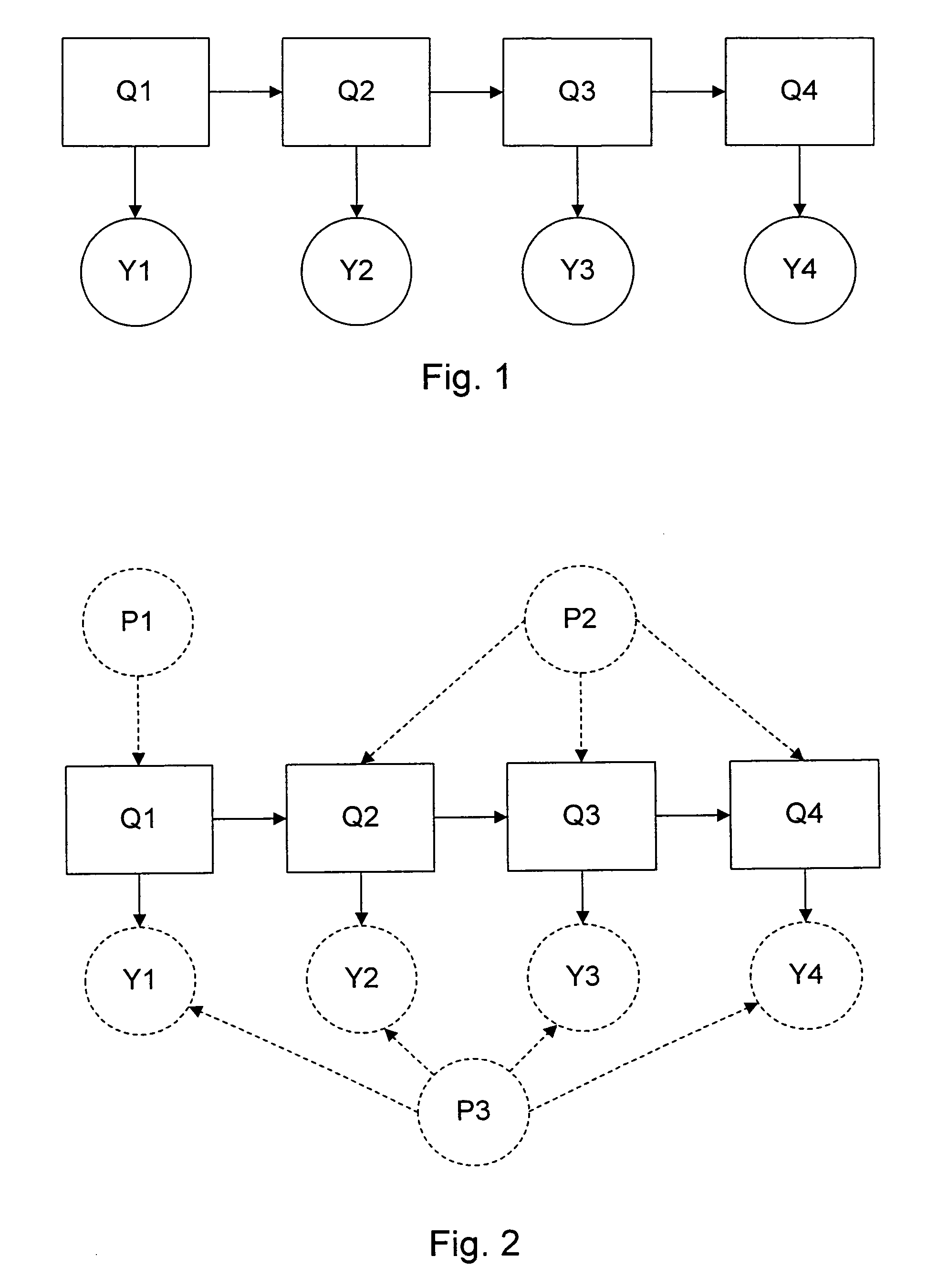Game theoretic prioritization scheme for mobile ad hoc networks permitting hierarchal deference
a game theory and hierarchy technology, applied in the field of ad hoc network protocols and control architectures, can solve the problems of increasing requests for retransmission and retransmission, excessive delay or simply loss of packet proportion, and the cost of circuit switched technologies such as dialup modems, which may exceed the cost of end-to-end quality of service guarantees
- Summary
- Abstract
- Description
- Claims
- Application Information
AI Technical Summary
Benefits of technology
Problems solved by technology
Method used
Image
Examples
first embodiment
[1354]In a typical auction, each player is treated fairly; that is, the same rules apply to each player, and therefore a single economy describes the process. The fair auction therefore poses challenges for an inherently hierarchal set of users, such as a military organization, where rank is accompanied by privilege. The net result, however, is a decided disadvantage to lower ranking agents. In a mobile ad hoc network, a real issue is user defection or non-compliance. For example, where a cost is imposed on a user for participating in the ad hoc network, e.g., battery power consumption, if the anticipated benefit does not exceed the cost, the user will simply turn off the device until actually needed. The result of mass defection will of course be the instability and failure of the ad hoc network itself, leading to decreased utility, even for those who gain an unfair advantage under the system. Thus, perceived fairness and net benefit is required to network success, assuming that de...
second embodiment
REFERENCES (SECOND EMBODIMENT)
[1468]1. F. P. Kelly, A. Maulloo, and D. Tan. Rate control in communication networks: shadow prices, proportional fairness and stability. Journal of the Operational Research Society, 49, 1998. http: / / citeseer.ist.psu.edu / kelly98rate.html
[1469]2. J. MacKie-Mason and H. Varian. Pricing congestible network resources. IEEE Journal on Selected Areas in Communications, 13(7):1141-1149, 1995.
[1470]3. Courcoubetis, C., Siris, V. A. and Stamoulis, G. D. Integration of pricing and flow control for available bit rate services in ATM networks. In Proceedings IEEE Globecom '96, pp. 644-648. London, UK. http: / / citeseer.ist.psu.edu / courcoubetis96integration.html
[1471]4. L. Buttyan and J.-P. Hubaux. Rational exchange—a formal model based on game theory. In Proceedings of the 2nd International Workshop on Electronic Commerce (WELCOM), November 2001. http: / / citeseer.ist.psu.edu / an01rational.html
[1472]5. P. Michiardi and R. Molva. Game theoretic analysis of security in mo...
third embodiment
[1525]A third embodiment of the invention, described below, represents a system which may employ a self-organizing network to convey information between mobile nodes. It is expressly understood that the concepts set forth above in the first and second embodiments are directly applicable, and each aspect of the third embodiment may be extended using the hierarchal principles and modifications, in a consistent manner, to achieve the advantages described herein. That is, while the third embodiment generally describes peer nodes, the extension of the systems and methods to non-peer nodes is specifically envisioned and encompassed.
[1526]This patent builds upon and extends aspects of U.S. Pat. No. 6,252,544 (Hoffberg), Jun. 26, 2001, and U.S. Pat. No. 6,429,812, Aug. 6, 2002, which are expressly incorporated herein by reference in its entirety. See, also, U.S. Pat. No. 6,397,141 (Binnig, May 28, 2002, Method and device for signalling local traffic delays), expressly incorporated herein by...
PUM
 Login to View More
Login to View More Abstract
Description
Claims
Application Information
 Login to View More
Login to View More - R&D
- Intellectual Property
- Life Sciences
- Materials
- Tech Scout
- Unparalleled Data Quality
- Higher Quality Content
- 60% Fewer Hallucinations
Browse by: Latest US Patents, China's latest patents, Technical Efficacy Thesaurus, Application Domain, Technology Topic, Popular Technical Reports.
© 2025 PatSnap. All rights reserved.Legal|Privacy policy|Modern Slavery Act Transparency Statement|Sitemap|About US| Contact US: help@patsnap.com



